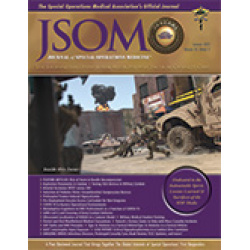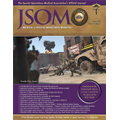Military Standard Testing of Commercially Available Supraglottic Airway Devices for Use in a Military Combat Setting
Bedolla C, Zilevicius D, Copeland G, Guerra M, Salazar S, April MD, Long B, Naylor JF, De Lorenzo RA, Schauer SG, Hood RL 23(2). 19 (Journal Article)
Introduction: Airway obstruction is the second leading cause of death on the battlefield. The harsh conditions of the military combat setting require that devices be able to withstand extreme circumstances. Military standards (MIL-STD) testing is necessary before devices are fielded. We sought to determine the ability of supraglottic airway (SGA) devices to withstand MIL-STD testing. Methods: We tested 10 SGA models according to nine MIL-STD-810H test methods. We selected these tests by polling five military and civilian emergency-medicine subject matter experts (SMEs), who weighed the relevance of each test. We performed tests on three devices for each model, with operational and visual examinations, to assign a score (1 to 10) for each device after each test. We calculated the final score of each SGA model by averaging the score of each device and multiplying that by the weight for each test, for a possible final score of 2.6 to 26.3. Results: The scores for the SGA models were LMA Classic Airway, 25.9; AuraGain Disposable Laryngeal Mask, 25.5; i-gel Supraglottic Airway, 25.2; Solus Laryngeal Mask Airway, 24.4; LMA Fastrach Airway, 24.4; AuraStraight Disposable Laryngeal Mask, 24.1; King LTS-D Disposable Laryngeal Tube, 22.1; LMA Supreme Airway, 21.0; air-Q Disposable Intubating Laryngeal Airway, 20.1; and Baska Mask Supraglottic Airway, 18.1. The limited (one to three) samples available for testing provide adequate preliminary information but restrict the range of failures that could be discovered. Conclusions: Lower scoring SGA models may not be optimal for military field use. Models scoring sufficiently close to the top performers (LMA Classic, AuraGain, i-gel, Solus, LMA Fastrach, AuraStraight) may be viable for use in the military setting. The findings of our testing should help guide device procurement appropriate for different battlefield conditions.


 Español
Español 






